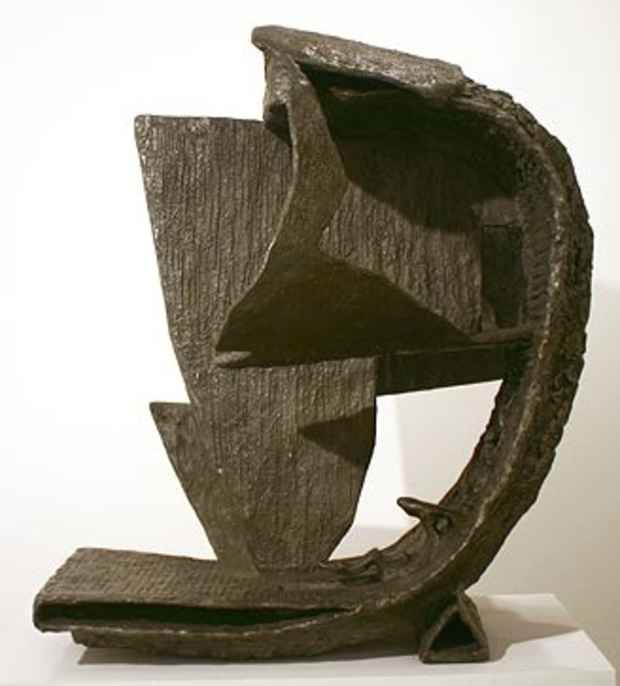Frederick Kiesler "Off the Wall"
Jason McCoy, Inc. (Midtown)

This event has ended.
Focusing on the artist's vision of space, the exhibition will be comprised of three Endless House sculptures, several Galaxy paintings, three Grotto for Meditation models, as well as Kiesler's master drawing of Marcel Duchamp. Kiesler's vision of a biomorphic, freely flowing, continuous, human-centered living space, which he called the Endless House, dates back to 1922. It was to synthesize painting, sculpture, architecture, and the environment in order to establish a space, which was without a sense of boundaries. Kiesler continued to develop this theme in his architectural designs and sculptures until the end of his life. Describing his idea of the house, he stated that it was to be "endless like the human body—there is no beginning and no end."
In the 1950s and 1960s, Kiesler worked on a series of paintings, which translated his vision of space into multi-paneled installations that protruded from the wall. Synthesizing painting, sculpture and drawing, the Galaxies are presented as grouped units. To Kiesler, the space between the different paintings was a reflection of the "inner necessity" of the work as a whole, explaining that it was the same as what "breathing is to our body reality." If viewed from the side, the Galaxies assume a sculptural quality. In 1954, Kiesler wrote: "the traditional division of the plastic arts, sculpture, and architecture, is transmuted and overcome and their fluid unification is now contained within rather than combined from without."
The Grotto for Meditation was commissioned by Mrs. Jane Blaffer Owen in 1963 for New Harmony, Indiana. Though the structure was never built, drawings and models remain. As a center for meditation, the Grotto was to embody Kiesler's vision of a biormorphic, endless space, in which the human mind would be uninhibited. In addition, the designs reveal a highly developed symbolism: the space is depicted as a shell, alluding to the feminine body as well as to the Christian fish-motif. Kiesler envisioned the Grotto as a center of calm, surrounding it with water that would flow from within.
[Image: Frederick Kiesler "Endless House Model" (1959) concrete and wire mesh, aluminum paint 41 x 39 x 34 in.]
Media
Schedule
from March 11, 2010 to May 01, 2010